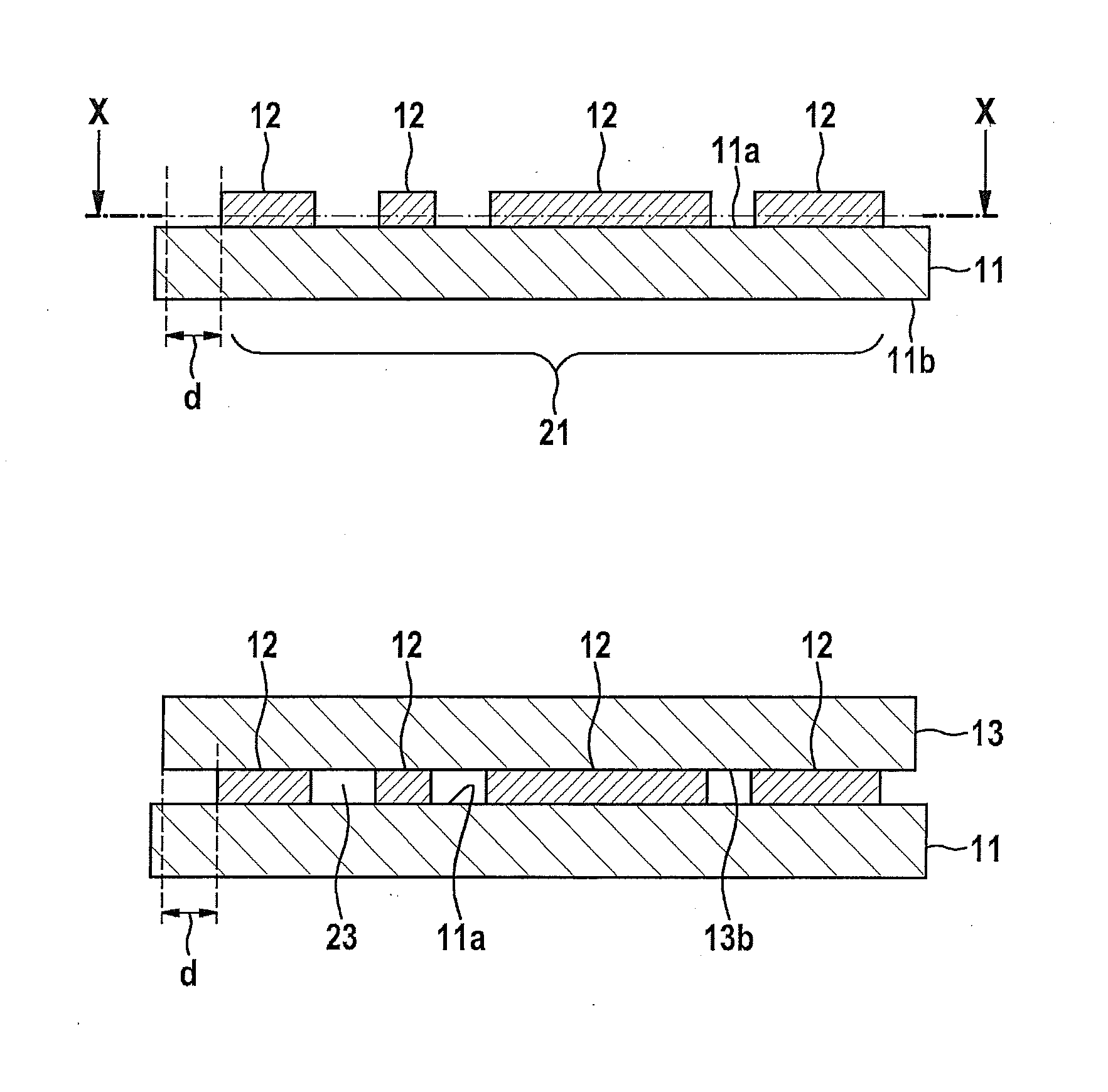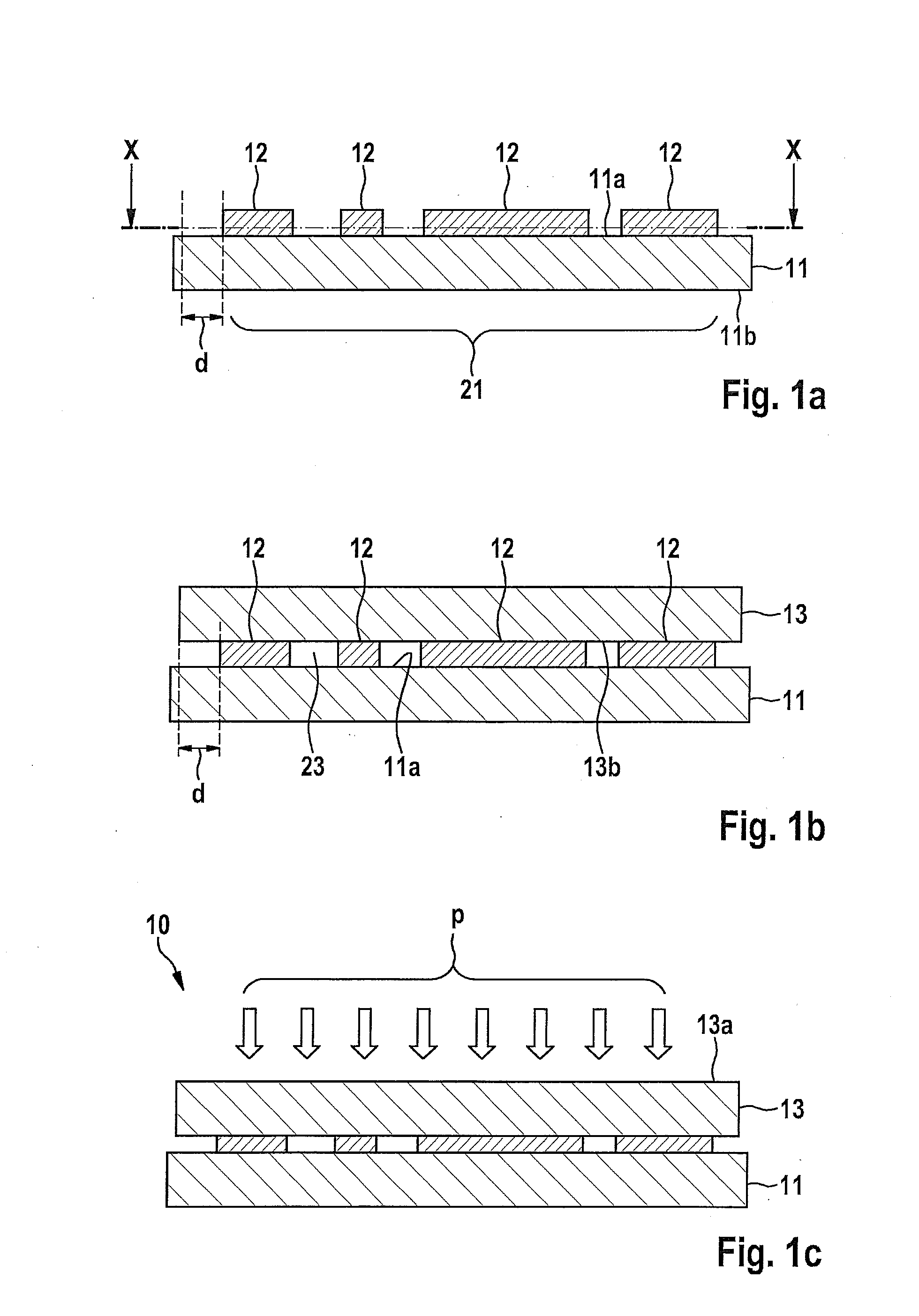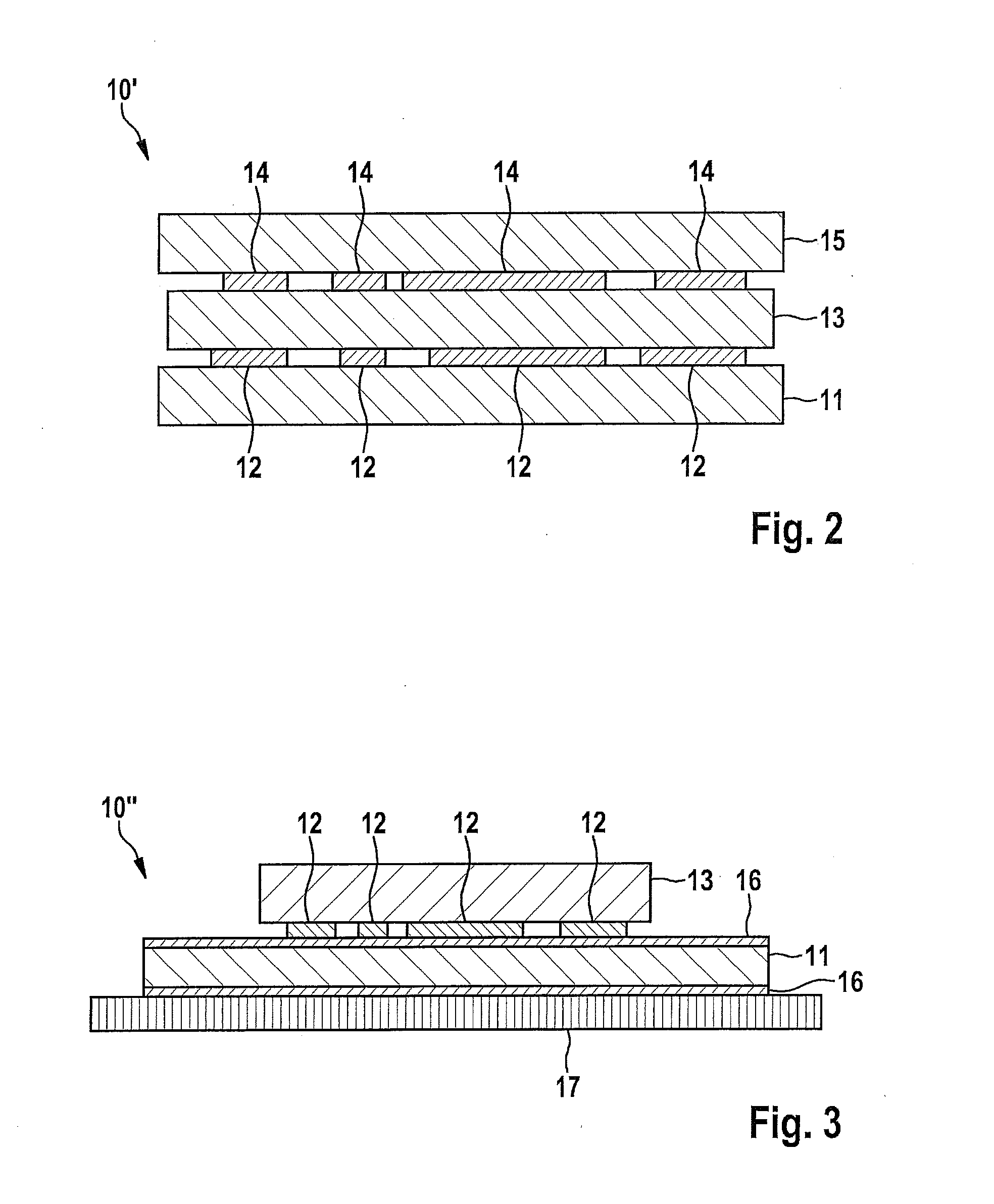Method for Producing Structured Sintered Connection Layers, and Semiconductor Element Having a Structured Sintered Connection Layer
a technology of structured sintered layers and semiconductor elements, which is applied in the direction of basic electric elements, manufacturing tools, solid-state devices, etc., can solve the problems of adverse effect on the stability and reliability of the sinter layer, and achieve the effect of satisfying the electrical and thermal connection, reducing mechanical tension within the chip, and increasing surface coverag
- Summary
- Abstract
- Description
- Claims
- Application Information
AI Technical Summary
Benefits of technology
Problems solved by technology
Method used
Image
Examples
Embodiment Construction
[0022]Unless stated otherwise, identical or functionally equivalent elements, features and components have been provided with the same reference symbols. It is understood that components and elements in the figures are not necessarily depicted true to scale with respect to one another for reasons of clarity and comprehensibility.
[0023]FIGS. 1a through 1c show stages of a method for producing structured sinter layers 12 on a substrate 11. FIG. 1a shows a schematic representation of a substrate 11 having a first main surface 11a and a main surface 11b which lies opposite first main surface 11a. For example, substrate 11 may be a metal substrate, especially a copper substrate, or a substrate coated with metal. A noble metal surface, e.g., because of a nickel-gold metal coating on a copper substrate, is able to ensure excellent adhesion of the sinter layer on the substrate. Sinter elements for the development of a sinter layer 12 may be applied on main surface 11a. For example, the sint...
PUM
| Property | Measurement | Unit |
|---|---|---|
| thickness | aaaaa | aaaaa |
| thickness | aaaaa | aaaaa |
| thickness | aaaaa | aaaaa |
Abstract
Description
Claims
Application Information
 Login to View More
Login to View More - R&D
- Intellectual Property
- Life Sciences
- Materials
- Tech Scout
- Unparalleled Data Quality
- Higher Quality Content
- 60% Fewer Hallucinations
Browse by: Latest US Patents, China's latest patents, Technical Efficacy Thesaurus, Application Domain, Technology Topic, Popular Technical Reports.
© 2025 PatSnap. All rights reserved.Legal|Privacy policy|Modern Slavery Act Transparency Statement|Sitemap|About US| Contact US: help@patsnap.com



